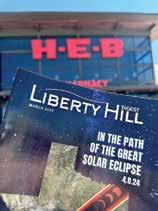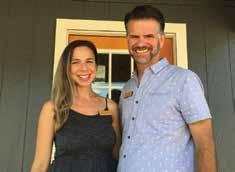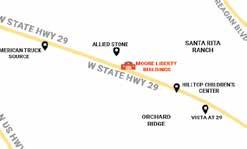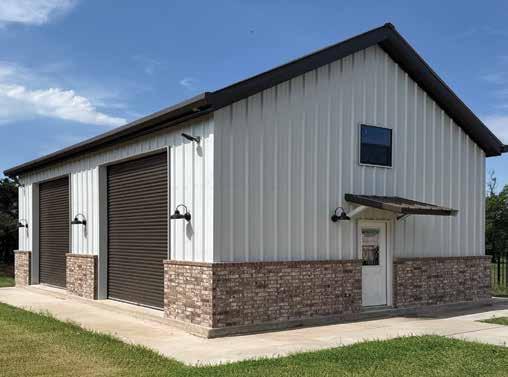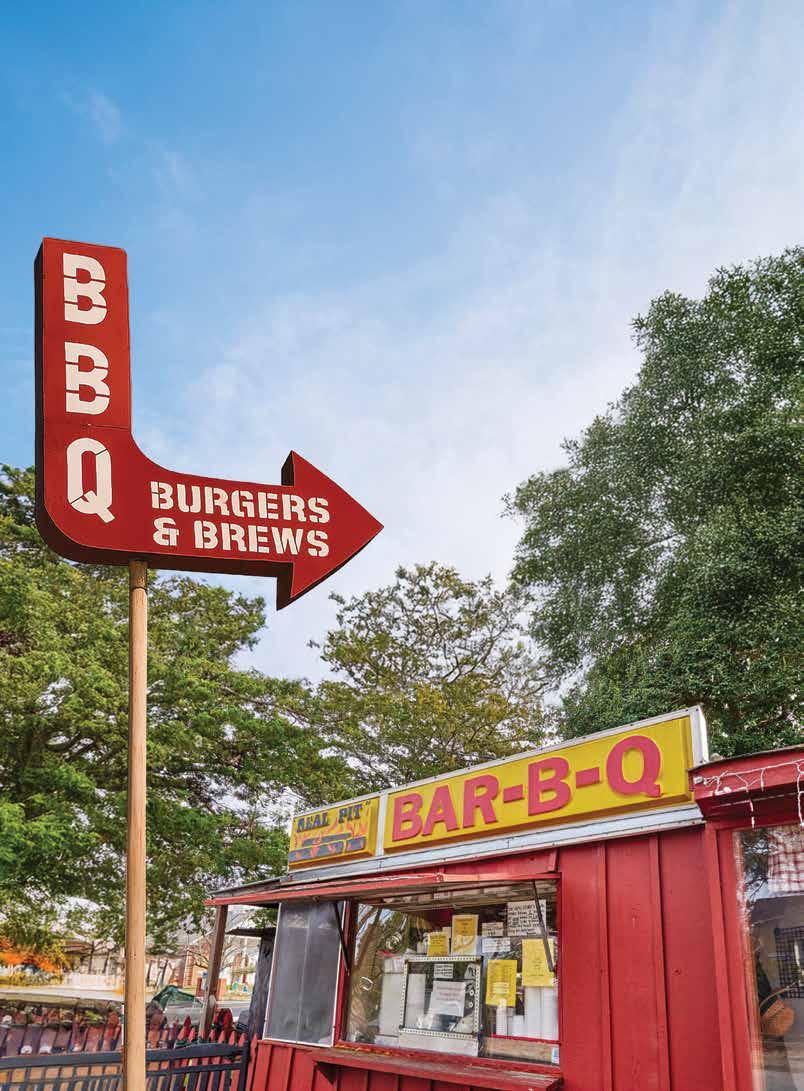

DIGEST
THE BEST OF SUMMER IN TEXAS
Gather, Grill, and Raise a Glass


Published by Fidelis Publishing Group, LLC
PUBLISHER • CATHY PAYNE

Like many of the best in her craft, Cathy has a specialized degree—in her case, hard science—and a gift for writing. She found her voice and fulfillment reporting and writing news and magazine features for a regional Central Texas audience. Along with serving as the publisher of the Liberty Hill Digest, Cathy oversees multiple magazines, marketing campaigns, and books.
SENIOR WRITERS / COPY EDITORS
Ann Marie Kennon
Charlotte Kovalchuk
CONTRIBUTING WRITERS
Linda A. Thornton
GRAPHICS & DESIGN
Sandra Evans • Marilee Goldoni
CONTRIBUTING PHOTOGRAPHERS
Patrick St. Cin
CONTENT MANAGER • Camy Reynolds
IT/WEBMASTER • Jesse Payne
CONSULTANT • W. Ben Daniel
ADVERTISING info@lhtxdigest.com 512-746-4545
Liberty Hill Digest is a Fidelis Publishing Group, LLC publication and a product of AdvocateNewsTX Newspaper. Copyright © 2025
All rights reserved. Liberty Hill Digest is published monthly and mailed USPS, free of charge, to homes and businesses in Liberty Hill, TX zip codes.
Mail may be sent to Liberty Hill Digest, P.O. Box 213, Jarrell, TX 76537.
Email: info@lhtxdigest.com
WHO WE ARE
In a world where daily headlines often drown out meaningful local stories, Liberty Hill Digest stands as a beacon of positivity and connection. More than just a lifestyle magazine, we’re passionate about telling the stories that define who we are as a community—through the people, programs, and values that help Liberty Hill thrive.
Since our launch in 2020, we've shared more than 550 stories highlighting the spirit of our city and have proudly mailed over 400,000 copies—free of charge— to keep our community informed, inspired, and united.
Our mission extends beyond the printed page. Each issue supports causes close to home, from promoting adoptable pets through the Williamson County Regional Animal Shelter to spotlighting local nonprofits like L4 Cares. Our rotating nonprofit column creates space for advocacy, awareness, and connection.
We’re especially proud to showcase the heart of Liberty Hill—from students, FFA and 4-H youth, and Liberty Hill ISD to essential organizations like Operation Liberty Hill. Through in-depth features and cover stories, we honor those making a difference and inspire others to get involved.
Cultural touchstones like Whimsy & Wonder and city-wide events are celebrated not just as happenings, but as expressions of our shared identity. We also amplify the voices of first responders, veterans, and everyday heroes working behind the scenes.
Every November, our Giving Thanks & Giving Back issue reminds us of the impact of gratitude and community support, shining a light on the philanthropic efforts that make Liberty Hill stronger.
At its core, Liberty Hill Digest is more than a publication—it’s part of the community fabric. It advocates, educates, and celebrates. It reflects what’s good and possible when we choose to lift one another up.
We’re proud of what we’ve built, and even more excited about what’s ahead.





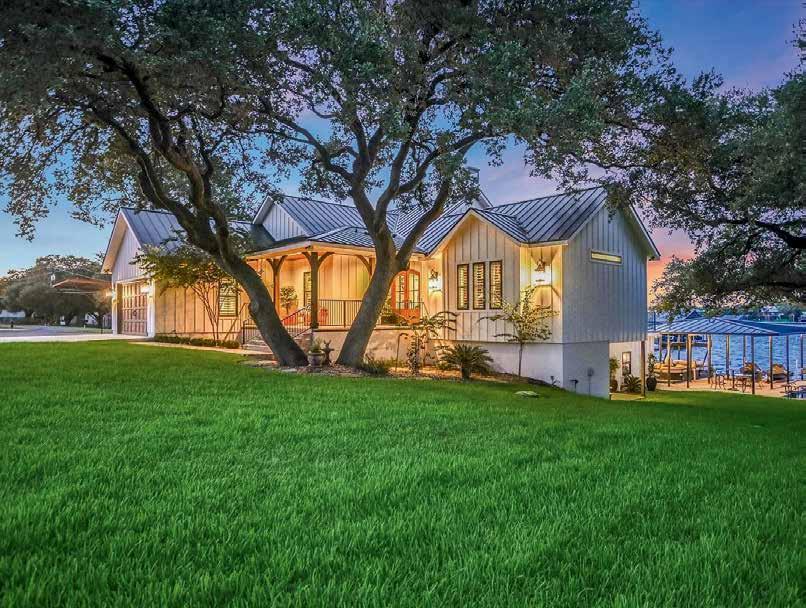


Liberty Hill Chamber of Commerce Gives Back to the Future of the Community
In a heartfelt display of support for the next generation, the Liberty Hill Chamber of Commerce (LHCC) has awarded scholarships to five exceptional seniors from Liberty Hill High School. These scholarships, each valued at $1,000, were the result of a rigorous essay-writing contest designed to showcase the students' writing abilities and personal reflections.
The prompt for the contest asked seniors to write a 500word essay on “the most influential person in your life.” With passion and sincerity, 23 students submitted essays to a dedicated committee composed of LHCC members. After careful review, the top five submissions were selected based on creativity, depth of thought, and writing skill.
Regina O’Brien, secretary of the Liberty Hill Chamber of Commerce and leader of the LHCC Scholarship Committee, expressed the significance of the initiative, stating, “These are not just scholarships, but an investment in the community.” Her words reflect one of the Chamber’s broader visions of uplifting the community by empowering its youth.
Chamber Board Member Rachel Madison, who also served on the scholarship committee, was thrilled to participate in the inaugural scholarship award presentation. “It’s an honor to be part of the Chamber’s first-ever presentation of the senior scholarship awards,” she said. “Being able to hand these checks to the winners personally and read their stories is a reminder of the bright future ahead for Liberty Hill.”
The five winning seniors were recognized in a special ceremony attended by their families, teachers, and Chamber members. Their essays highlighted individuals ranging from
family members and teachers to coaches and community leaders—each story underscoring the unique influences that shape young lives.
The LHCC’s commitment to education and youth development goes beyond monetary awards. This new scholarship initiative is part of a larger mission to create meaningful opportunities for local students and foster a culture of support between the business community and Liberty Hill High School.
As the Chamber continues to grow and evolve, so does its dedication to investing in the leaders of tomorrow. With this initiative, the LHCC not only rewarded academic and personal excellence but also set a powerful example of how local organizations can play a vital role in shaping the future of their communities.
The Liberty Hill Chamber of Commerce’s scholarship program has made a lasting impression, and with continued support, it promises to become a cherished tradition for years to come.
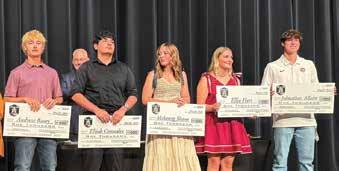

BUDGET PLANNING

How much is this gonna cost me?
Are you in need of a new building for your property? Here’s some budget guidance to help you plan.
First, a standalone backyard office. Whether it’s a quiet nook for remote work or a creative studio, budgets typically range from $20,000 to $50,000. This covers quality materials, insulation, and basic utilities to keep you comfortable.
Next, a detached garage or workshop, including the concrete foundation, can run from $40,000 to over $100,000. The range depends on size, finishes, and features like extra storage, insulation, electrical, and exterior treatments like custom garage doors, masonry or wood detail. You can customize to fit your style and/or budget.
For an ADU (accessory dwelling unit) or casita, think $60,000 to $150,000. These self-contained units are perfect for guests, family, or rental income. They’re complex, with plumbing, electrical, and HVAC needs, but they’re so worth it!
A shed is a simpler project, with costs from $4,000 to $40,000. A basic storage shed is on the lower end, while a custom one with electricity or insulation climbs higher. Size of course is the largest driver of cost.
For a carport, expect $3,000 to $20,000. These range from simple, budget-friendly ways to protect vehicles, to stylish higher-end options that match and complement your home. Pricing varies based on materials and size. A client recently shared how their carport doubled as a shaded gathering spot for summer barbecues—talk about multi-purpose!
Finally, raw land development—think driveways, grading, clearing, and site utilities like septic, well, or electricity—can range from $50,000 to $150,000. This is the foundation of your vision, turning raw land into a canvas for your future.
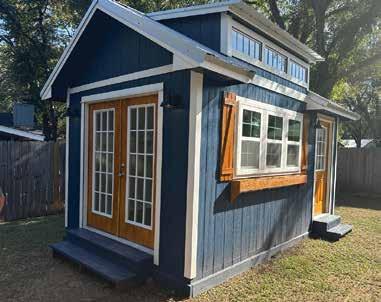
Probably the most important piece of advice: partner with a contractor who gets the full scope of your project. A good project manager is like a trusted friend, guiding you through the parts you don’t understand.
You’re not alone in this. Lean on your contractor, ask questions, and they’ll help you understand all the
parts of the process.
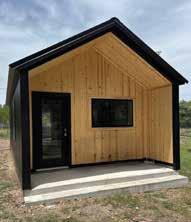

by Charlotte Kovalchuk and Camy Reynolds
Smoke, Sizzle & Sauce
The Texas BBQ Burger Boom
A Marriage Made in Mesquite
In Texas, barbecue isn’t just food—it’s heritage. And the burger? Well, it is practically a birthright. But in recent years, a delicious transformation has emerged: the rise of the BBQ-style burger, where smoky brisket meets buttery buns, and dry rubs mix with juicy griddle patties.
It’s a fusion that feels inevitable here in Central Texas, where backyards double as smoke labs and chefs treat chuck like fine art. Now, diners are reaping the rewards of that experimentation—with burgers that taste like they have been to barbecue school.
Barbecue and burgers are beloved in Texas—but when they collide? That’s where the real flavor magic begins.
Across Williamson County and beyond, pit masters and burger artists are fusing smokehouse techniques with patty perfection.
What Makes a Burger ‘Texas BBQ’ Style?
It starts with the meat. Some chefs use a custom blend of brisket, short rib, and chuck, echoing the rich, marbled cuts that make Texas barbecue famous. Others go all in and smoke the patties themselves, low and slow over post oak or mesquite.
Seasoning matters, too. You’ll find patties rubbed with the same spices used for ribs—black pepper, paprika, garlic, maybe a hint of brown sugar. And then come the toppings: slices of smoked sausage, chopped brisket, spicy pickles, barbecue sauce, or creamy slaw, stacked high and dripping with flavor.

Where to Try It: BBQ Burgers Around Williamson County
WILDFIRE – GEORGETOWN
Everything at Wildfire is kissed by oak fire, from the beef patties to the hickory-smoked brisket. Their standout: The Ponderosa Burger— provolone cheese, habañero mango sauce, lettuce, onions, tomatoes, pickles, and chopped brisket on a beef patty and sourdough bun.
TEJANO COOKERS BBQ & CATERING – GEORGETOWN
Go big or go home with CJ’s Big Boy Barbecue Sandwich—a full pound of meat with half sausage, half brisket sliced or chopped, stacked onions, pickles, jalapeños, and sauce. Or a mouthwatering El Tejano Barbecue Sandwich: sliced brisket topped with Hot Cheetos and mac & cheese.
LIBERTY TAVERN –LIBERTY HILL
This small-town spot with big-city flavor serves a Brisket Sandwich that delivers on every level—barbecue brisket layered with spicy sauce, house-pickled onions, and crispy onion rings on a toasted sourdough bun. It’s a well-balanced bite that hits all the textures: tender meat, crunchy toppings, and bold, tangy heat.
THE SALT LICK BBQ – ROUND ROCK
Known for legendary smoke, Salt Lick’s brisket and pulled pork sandwiches deliver the real deal. Their Pulled Pork Sandwich comes with coleslaw and spicy sauce, while the Brisket Sandwich brings bold live oak smoke flavor without overwhelming the meat.
SLAB BBQ AND BEER – AUSTIN
At Slab, hip-hop culture meets hardwood smoke in a lineup of original sandwiches with names that pay homage to rap legends. The Notorious P.I.G. features tender pulled pork, mustard slaw, and house-made BBQ sauce on a bun. The Donk loads a beef patty with chopped brisket, cheddar, pickles, and jalapeños for a stacked bite that hits hard.
WHY IT WORKS
For Mark Avalos, owner of Austin-based Slab BBQ & Beer, barbecue burgers offer a creative twist on a time-honored smokehouse tradition. “I wanted to differentiate
us from the many different barbecue places in the area. As good as brisket, chicken, sausage, and ribs are, it’s about what you can do with them—not just serve a straight plate of meat and a side,” he says. “Back when I started, nobody was really doing sandwiches with barbecue. Now you see all these beautiful fusions—Mexican, Asian, Korean, Egyptian—you name it. People are getting creative with different styles, and that’s where barbecue burgers come in.”
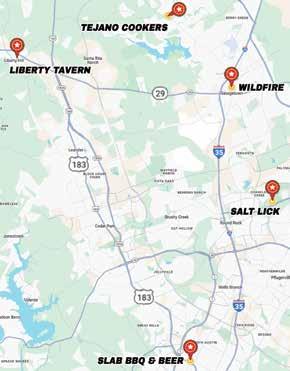
DIY: Backyard BBQ Burgers
Can’t make the drive? Bring the flavor home. Here’s a simple formula for a backyard BBQ-style burger:
PATTY BLEND: 50% chuck, 25% brisket, 25% short rib
RUB: Salt, coarse black pepper, garlic powder, smoked paprika
SMOKE: If you’ve got a smoker or pellet grill, cook at 225°F for 45 mins before finishing with a sear
TOP IT: Brisket slices, BBQ sauce, pickled onions, cheddar, and slaw
BUN: Toasted brioche or Texas toast
Final Bite
Whether you’re chasing smoke trails across the county or crafting your own backyard burger stack, one thing’s for sure: in Liberty Hill and towns around, barbecue isn’t just on the side anymore—it’s front and center, right on the bun.
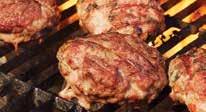
by Charlotte Kovalchuk
From Trail Smoke to Strip Malls
Serving Up Texas Barbecue History
Texas barbecue isn’t just a beloved cuisine—it’s heritage wrapped in butcher paper and passed down through generations of fire, flavor, and tradition. Born from the fire pits of cattle drives, shaped in the smokehouses of European immigrants, and perfected in the roadside pits of African American communities, barbecue is a tradition as diverse as Texas itself. Today, that storied legacy shows up everywhere–from Lockhart town squares to suburban strip malls–each bite telling a story of grit, migration, and cultural fusion.
Ancient Origins: Indigenous and Spanish Influences
Long before European settlers arrived, Native American tribes like the Caddo were roasting venison and other game over open fires and in earth ovens, laying the groundwork for Texas’ slow-cooked meat traditions.
In the 1600s, Spanish shepherds on the plains of South Texas introduced al pastor–spit-roasted lamb and goat–borrowing from Caribbean and Moorish traditions. Their methods, blending spices and smoke over open flames, further enriched the region’s culinary landscape.
According to the Texas Historical Commission, it wasn’t until the early 1800s that the word “barbecue” likely entered the Texas lexicon. The term was a variation of the Haitian word barbacot–a framework of sticks used for smoking or roasting meat. It made its way to Texas via enslaved Haitians in the Carolinas who had introduced the method of barbecuing to Southern plantation owners. From there, the word and the technique traveled west, embedding themselves in the state’s food culture.
19th Century: The Birth of Barbecue Culture
After the Civil War, Texas became the epicenter of the American cattle industry. Trails like the Chisholm and Goodnight-Loving enabled Texas to evolve as the heart of America’s beef belt. Cowboys who worked long hours in harsh conditions cooked salvaged cuts of meat over open fires using green mesquite or oak wood. This was
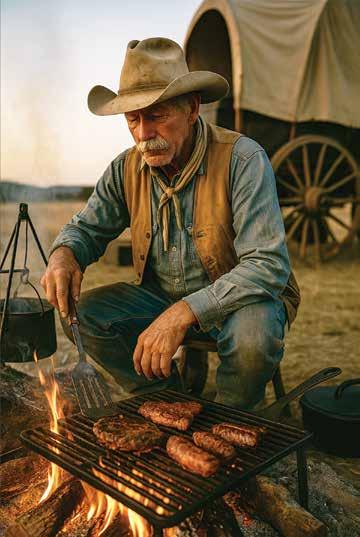
survival cooking–practical, rustic, and rich in smoke. These early chuck wagon pit stops laid the foundation for the smoky techniques that would become hallmarks of Texas barbecue.
Meanwhile, German and Czech immigrants in Central Texas brought Old World butchery and meat preservation techniques to the region. In towns like Elgin, Taylor, and Lockhart, they opened meat markets that smoked sausages and briskets in brick or cinder block pits. The food was simple but satisfying–slices of pepper-crusted brisket or rings of pork sausage, served with saltines, pickles, and onions. No sauce. No frills. Just smoke, salt, and craftsmanship–a tradition that continues today at historic joints like Kreuz Market and Southside Market.

BBQ EVOLUTION
Late 19th to Early 20th Century: African American Traditions Take Root
Barbecue culture in East Texas flourished in African American communities, where pit masters transformed smoke and sauce into entrepreneurial lifelines during the era of Jim Crow segregation. With limited access to capital or storefronts, many began selling ribs and links out of backyard pits or roadside stands, often near churches or in makeshift sheds along dirt roads. The style became distinct: meats slow-cooked until falling apart, slathered in rich, sweet, tomato-based sauces, and served with white bread, beans, and soulful hospitality.
20th Century: Barbecue Becomes a Community Staple
As Texas towns expanded in the 20th century, barbecue grew into a civic ritual. What had once been trail fare evolved into a fixture at community gatherings, political rallies, Juneteenth celebrations, Sunday fundraisers, and family reunions.
In Central Texas, meat markets like Louie Mueller Barbecue in Taylor or Kreuz Market in Lockhart doubled as communal space–places where neighbors caught up over sausage links and butcher paper-stained picnic tables. In African American
communities, barbecue fundraisers helped sustain churches and schools underfunded by segregation-era policies.
By the 1960s and ‘70s, as highways expanded and towns suburbanized, barbecue joints began popping up in shopping centers and roadside stops. These unassuming spots–often little more than converted gas stations or cinder block shacks–became neighborhood institutions, preserving family recipes and feeding generations with a steady fire and an open door.
Modern Era: The Craft Barbecue Renaissance
In the last 20 years, Texas has witnessed a full-blown barbecue revival. Pit masters like Aaron Franklin of Austin’s Franklin Barbecue have brought national acclaim to the state’s traditions, elevating brisket to cult status and drawing lines that snake around city blocks. But this renaissance didn’t replace the old ways–it amplified them. Today’s pit masters often honor the traditions that came before, with the saucy tenderness of East Texas, the salt-and-smoke purity of Central Texas, or the border-blending flavors of the Rio Grande Valley. The heart of Texas barbecue still beats strong in the pits of small towns, roadside joints, and backyard smokers.



KIDS & EDUCATION

by Charlotte Kovalchuk
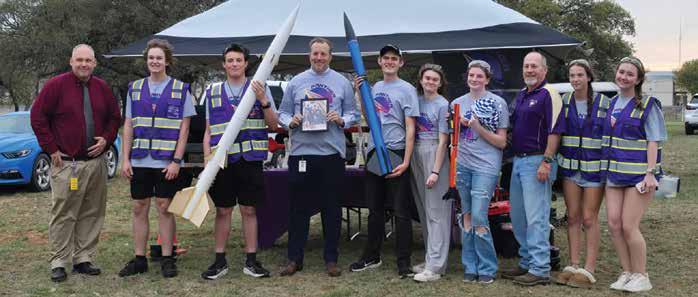
OVER THE MOON
Liberty Hill Student’s NASA Journey Takes Off
While many teens have spent their summer enjoying beach trips or bingeing Netflix, Liberty Hill High School junior Parker Pevehouse has been exploring the cosmos—virtually, at least. He’s spent the last few months immersed in NASA’s High School Aerospace Scholars (HAS) program, an initiative aimed at inspiring the next generation of scientists and engineers through real-world STEM experiences. “As a high school student, to be able to be a part of this program and getting to learn more in depth about these space programs than NASA might release to the public, it’s been a really cool, fun experience. This is stuff people out of college might be doing as part of NASA, and I’m only learning this as a high school student.”
His journey began at the start of his junior year, when LHHS launched its first-ever rocketry club. It’s where he met a friend who had previously participated in NASA’s HAS program and encouraged him to apply. For Parker, who had always been curious about space and developed an early interest in engineering by taking apart toys to understand how they worked, the program felt like the perfect fit. After applying, he received news that he had been nominated by his state legislator and selected as one of more than 750 students across Texas to participate in the program. “It was an awesome experience to get that email. It’s an honor to be selected.”
LAUNCHPAD FOR LEARNING
The first phase of HAS involved a 20-week online course during the school year. Students completed STEM-focused modules, wrote essays, collaborated with peers across the state, and explored how NASA-developed technology impacts everyday life. “There was a lot of learning about time management. I had to learn how to manage my school and NASA coursework balance.” One of his favorite assignments involved researching how tools developed for space missions—like cordless power drills—were later adapted for home use. In addition to individual work, Parker also engaged in statewide team discussions, learned from NASA scientists during webinars, and collaborated with students on complex problem-solving exercises.
Students who successfully completed the course were invited to join the Moonshot summer experience—a weeklong virtual mission simulation modeled after NASA’s Artemis program, which aims to establish a long-term human presence on the Moon. Parker was placed on Team Alpha Two, one of several groups tasked with designing and presenting a proposal for a lunar expedition. His team’s mission: develop a cargo lunar lander capable of transporting supplies and equipment to a future moon base. “We had to explain everything—how the lander would function, what systems it would use, how we’d test lunar soil content,” Parker says. “We would have Zoom meetings from 8am to 5pm every day, collaborating with students from Houston ISD, Frisco ISD, and McKinney ISD—it was really fun.”

Their final product was a video presented to a panel of NASA engineers, who selected the top three teams from the state, including Parker’s, for the next level of the program: an in-person visit to NASA’s Johnson Space Center in Houston at the end of July.
EYES ON THE NEXT MISSION
For Parker, the upcoming in-person experience at NASA’s Johnson Space Center in Houston is the next giant leap in his journey. He’ll spend a week touring facilities, meeting NASA experts face-to-face, and exploring the kinds of hands-on problem-solving that bring space missions to life. “We might get to go inside Building 9, where they have a full mock-up of the International Space Station,” he says. “They are doing testing on space suits because of the outdated technology since Apollo—like how to reduce weight without compromising safety. I’m looking forward to seeing how they work through problems.”
Equally exciting is the chance to finally meet the teammates he’s collaborated with virtually throughout the Moonshot program, as well as to represent Liberty Hill. “It’s just so cool to connect with people from all over Texas who are passionate about space.” And, as a student participating in a program directly tied to NASA’s Artemis mission, Parker understands the bigger picture. “We’re the generation that’s going to operate these kinds of missions in the future. NASA is making sure students like me get to be part of that—to support future missions to Mars and beyond.”
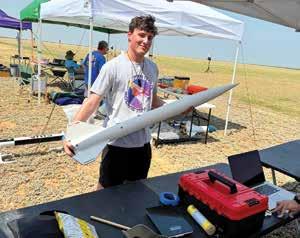
CHARTING HIS COURSE— AND LIGHTING THE WAY FOR OTHERS
Looking ahead, Parker hopes to continue on a path in the space industry, possibly working through NASA’s Commercial Crew Program with partners like SpaceX or Boeing. He’s especially interested in how space exploration can help humanity grow and adapt in the face of rising global challenges. “We’re going to have to think about living on other planets as Earth’s population grows. It’s a really interesting concept to think about.”
Parker also hopes to inspire younger students to pursue their interests in STEM. “When you’re a kid, a lot of us say we want to be astronauts or scientists or the president,” he says. “But as we grow up, some people start thinking they’re not cut out for NASA or that they’re not smart enough. If you keep chasing your dreams, you can get there.”
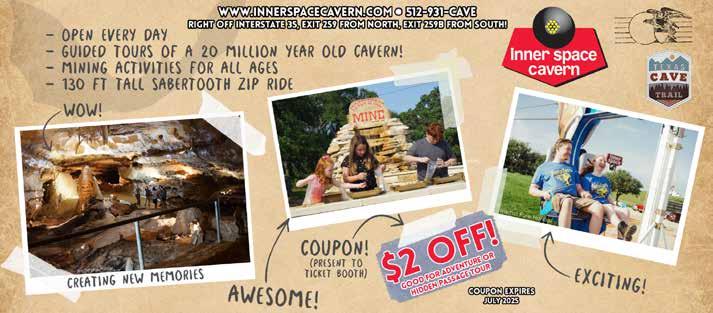
by Ann Marie Kennon

To celebrate the almost-semi-quincentennial birthday (yes, that is the correct word), of the greatest country ever, and as a fairly old person who works hard to use a full spice rack of words for a living, Belle is hereby declaring independence from modern verbal atrocities. So, to this, I say...
When in the course of human events, it becomes necessary for one satirist to dissolve the overused bonds of linguistic minimalism and assume, among the powers of the English language, the separate and elevated station to which erudite vocabulary entitles us, a decent respect to the intelligible opinions of mankind requires we should declare some words which we shall henceforth reject.
We hold these overused truths to be self-evident and also to be hyperbolic nonsense:
Procuring a parking spot under a tree at San Gabriel park on the 4th of July is not EPIC. How 'bout we dial it down, Achilles. You beat a minivan, not a Minotaur.
In truth I mean to separate myself from tyranny like “it was LITERALLY the best day of my life.” Was it though, Karen? I'm sure the first day of pumpkin spice latte was pretty satisfying, but did Adam Levine bring it to you on your wedding day in your new Escalade and Instagram selfies of you singing together at the reception ?
I hereby decree that PERFECT is an appropriate response only for sunsets, newborns, and Jesus—not from the appointment setter at the doctor’s office, and certainly not from every customer service rep who proclaims it, in that wee patronizing tone, when I successfully recite my own contact information. Seriously, Janine. Just say, “Okay, got it.” I didn't split an atom. You’re just confirming I haven’t forgotten my zip code.
From thence, we shall reclaim the original social order from the Gen Alpha sluggards and express all necessary reticence regarding the emergent SIGMA. I say—with some irony—that Alpha *types* shall lead, Beta shall support, and Sigma, despite all efforts to appear cool, aloof, and mysterious, shall be metaphorically shoved in a locker by the former two for refusing to participate in the collaborative project then acting superior about it, because... “groupthink”.
Belle's Linguistic Revolution
And so, Patriots, in the spirit of our forebears who tossed tea into harbors and wore wool in July without complaint, I hereby declare my glorious rebellion from the overlords of trend-speak, word inflation, and the dopamine-starved yapping of thumb warriors whose entire vocabulary has been reduced to “sus,” “slay,” and the occasional emoji that somehow conveys both sarcasm and pseudo-existential angst.
Let it be known that in this Belleverse I do not slay. I do not stan. And unless I am actually questioning my humble place in the vast, unknowable universe from the rim of the Grand Canyon, reflecting on my son's grasp of the Gospel, or watching a bald eagle snatch a salmon mid-flight while a choir sings, I will not use AWESOME. Phyllis, your charcuterie board was delightful but it did not fill my soul with awe.
We the people once learned language, civics, and good sense on sacred Saturday mornings from cheerful cartoon singers in powdered wigs. A bill sat patiently on Capitol Hill waiting to become a law, we learned why three is a magic number, there's never been a planet Janet hasn't seen, and verbs were what's happ'nin.
And for the support of this Glorious Rebellion, with a firm reliance on the wisdom of our elders and the enduring spirit of Schoolhouse Rock, I pledge to you my Eye Rolls, my Rhetorical Snobbery, and my Sacred Vocabulary. Though some may say this rebellion is about semantics, let the record show: words still mean things, and if we stop caring about that, we might as well communicate with emojis and interpretive dance. As for me and my mouth, we will serve the syntax.
Signed with excessive flourish,

First of Her Name, Breaker of Buzzwords, Defender of Context, High Priestess of the Grammar Police, Mistress of the Rolled Eye, and Honorary Chairwoman of the Society for the Preservation of SAT Vocabulary


